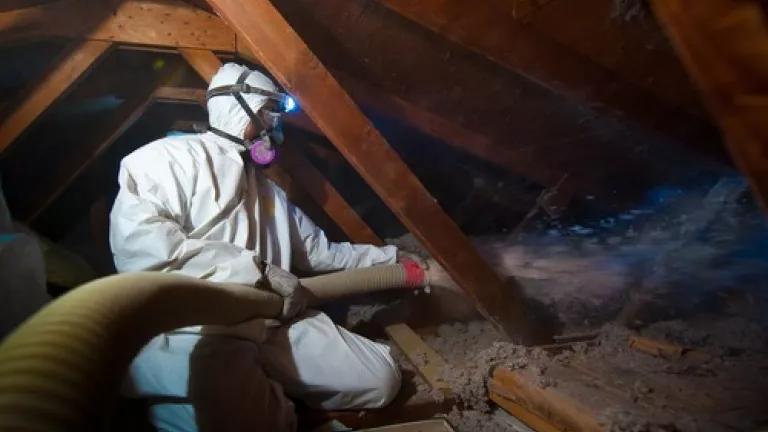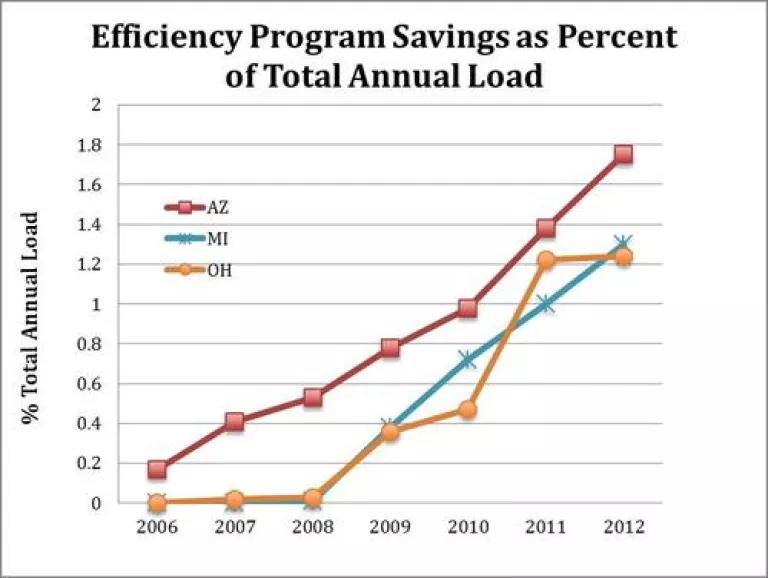
June 2 Remarks by EPA Administrator Gina McCarthy
There is overwhelming evidence that saving energy lowers electric bills while increasing comfort, supporting a growing workforce, and reducing harmful carbon pollution. And that’s why the Environmental Protection Agency and others are betting energy efficiency will play a major role in meeting EPA’s proposed carbon pollution standards, which allow states flexibility in reaching their emissions reduction targets.
This week’s groundbreaking proposal to establish the U.S.’s first national limits on power plant carbon pollution includes key recommendations to end energy waste in America’s homes, businesses and industries. In fact, efficiency – doing more with less electricity – is specifically mentioned 328 times in the 645-page document.
The EPA plan recognizes that efficiency is a major untapped resource and that cutting energy waste, along with increasing the use of other clean, renewable resources like wind and solar, can go a long way toward avoiding electricity generation from coal and gas – sources that emit carbon pollution that warms our planet and harms our health.
EPA’s plan includes very conservative assumptions about how fast we can scale up efficiency (many states have done it faster) and how much it will cost to implement energy-saving measures (EPA projects almost twice what NRDC estimated in its carbon pollution standards proposal). But efficiency still ends up being the key to making the standards cost-effective.
Here are the five reasons why efficiency is so important:
1. It Creates Jobs, Boosts the Economy & Reduces
Carbon Pollution
Americans spend more than $370 billion annually powering their homes, offices and factories. Making efficiency the central weapon in the fight against carbon pollution will slash emissions while lowering the average electric bill. EPA projects an 8 percent drop in electric bills but NRDC believes ramping up efficiency to higher, achievable levels will produce even larger savings.
In fact, if EPA sets final standards that rely on stronger efficiency measures, it could save U.S. households and businesses more than $37 billion on their electricity bills a year by 2020, according to NRDC’s analysis. That translates to about $100 savings per average household every year. America also could create 274,000 new efficiency-related jobs filled by electricians, roofers, carpenters, insulation workers, heating/air conditioning installers and heavy equipment operators, among others. (Here is an example from www.cleanenergyworksforus.org of how these jobs are created.)
As several state regulators have confirmed, every dollar invested in efficiency programs (such as rebates for upgraded appliances or financial help to weatherize homes) returns on average at least $3 in customer savings. And that doesn’t count the value of the health benefits from less soot and smog by burning less fossil fuels, which EPA pegs at $7 for every dollar invested in meeting the proposed standard.
Here are just two examples of efficiency’s success:
- The State of Michigan reported in 2013 that the first three years of utility energy efficiency programs saved $800 million on customer electric bills. Meanwhile, more than 22,000 people work in the energy efficiency sector.
- In Illinois, ComEd’s programs have reduced customer costs by $700 million to date. Meanwhile, there are nearly 40,000 energy efficiency sector workers in every region of the state.
By using better technology and innovation to provide the same or better services with less energy, efficiency plays a huge role in making the United States one of the world’s leading economies. In fact, America’s economy has tripled in output in the last 40 years while our energy use only increased by one-third, largely due to improved efficiency.
2. The Potential is Huge
In developing its proposal, EPA reviewed several national, state and regional studies that estimated how much efficiency remains untapped and also examined savings levels from existing programs. All the studies show significant amounts of cost-effective efficiency savings available in every sector and geographic region. EPA’s phased-in average target of efficiency savings equal to 1.5% of total annual electricity use is conservative and achievable as some states already surpass that goal.
A 2013 study by the United Technologies Corporation, in collaboration with the Rhodium Group, analyzed the impact of a 30% improvement in US building efficiency by 2030. They found that such an improvement is possible with existing technology and design practices and that it would generate $65 billion dollars per year in savings, net of investment costs, for American households, businesses and governments.
Innovation in a single technology may deliver very significant energy savings. Goldman Sachs analysts in March 2014 predicted that LED light bulb penetration could increase from 1% of current US installed lighting to 63% by 2025, and may result in an 11% cumulative reduction in long-term US power demand. That’s about 1% per year in savings from a single light bulb technology.
3. We Can Scale It Up Quickly
Across the country, states are championing new programs, crafting forward-looking policies, and promoting energy-savings targets to help unlock efficiency’s amazing potential. Twenty-six states have energy efficiency resource standards (EERS) requiring a specific level of savings and nearly every U.S. state invests in efficiency programs, but we can do much more.
Some states have reaped efficiency’s rewards for decades but even among those only recently launching programs, some ramped up very quickly – going from zero or near zero to aggressive savings levels in just a few years. This demonstrates EPA’s state targets are achievable.
Arizona, Michigan, and Ohio are good examples of quick efficiency scale-ups.

4. The Savings are Real
Utilities, state regulators, independent system operators (ISOs), businesses and energy service companies have relied on efficiency’s savings for more than 30 years. Efficiency also has become a factor in utility decisions about planning for and procuring resources to meet customer electricity needs. EPA’s proposal noted the existence of comprehensive and detailed reporting of efficiency’s impacts, costs, and other characteristics from all 50 states.
5. Efficiency Has Broad Bipartisan Support
For example:
- Three key state regulatory associations NACAA (National Association of Clean Air Agencies), NASEO (National Association of State Energy Officials), and NARUC (National Association of Regulatory Utility Commissioners) – including state regulators from both Democratic- and Republican-led states – jointly advocated that efficiency be an “integral, creditable part of the state and tribal plans to be developed in response to” the EPA standards.
- A survey across political lines by the National Association of Manufacturers and the National Electrical Manufacturers Association shows nine in ten Americans believe efficiency should be part of America’s energy solutions.
- A Bipartisan Policy Center independent panel’s 2013 report concluded that efficiency should be treated as an energy resource, just like natural gas, oil, coal, biomass, wind or nuclear power.
Efficiency is already a major success story with untold potential ahead. And despite what critics may claim, it is clearly the cleanest, cheapest and fastest way to cut carbon emissions while bolstering our economy. We have a moral obligation to future generations to act on climate change. Efficiency will help get us there.

